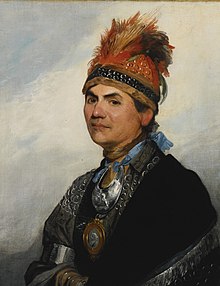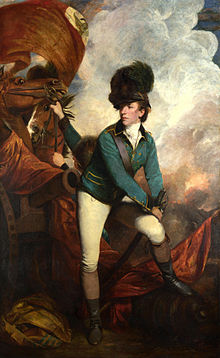Loyalists
Loyalists were North American colonists from the Kingdom of Great Britain who remained loyal subjects of the British Crown during the American Revolutionary War . They were also called " Tories ", Royalists or "King's Men" (men of the king). Their colonial opponents, who supported the American independence movement, were called patriots , Whigs, or simply Americans.
During the War of Independence
Historians estimate that approximately 15-20% of the adult white male population of the Thirteen Colonies were loyalists. An oft-quoted statement by John Adams in which he appeared to say that more than a third of the people were loyalists is out of context and does not relate to the opinion of the colonists. The majority of the loyalists were based in what is now the state of New York, the capital of which was in the hands of British forces from September 1776 until the 1783 evacuation. The Loyalists also made up the majority in Pennsylvania and the southern colonies of South Carolina and Georgia . In the other British colonies, however, they only represented a minority of the total population.
The Loyalists were linked to Anglicanism in the same way that the Patriots were linked to Presbyterianism . They also enjoyed a reputation for being wealthier and better educated than their patriotic opponents. But there were also many loyalists from poorer backgrounds, especially in the Mohawk Valley of Colony New York and in the border areas of Georgia and South Carolina. Catholic immigrants from Ireland were traditionally Republican, while Catholic immigrants from Scotland fought on the British side in the War of Independence and later formed a pillar of loyalists in Canada under Alexander Macdonell's leadership.
If the Loyalists were, from their own perspective, but also from a British perspective, honorable persons who stood by their king, while the American rebels were traitors, from the perspective of the USA they were traitors who turned against their own people and with the tyrannical one British government collaborated. During the war, the loyalists provided over 50 military units. Many of the loyalists had mortgaged their land or property. It is estimated that 30,000-35,000 men have served in regularly organized corps over time, not counting those who participated in the guerrilla warfare in South Carolina and elsewhere. Large numbers of loyalist families fled to New York and Long Island . Other loyalists re-established a pro-British colonial government in Georgia .
The loyalists began to leave the colonies right at the beginning of the war if transportation was available. About 70,000 Loyalists left the Thirteen Colonies, more than 3% of the total population. In areas under the control of the patriots, the loyalists have been victims of property confiscations, tar and feathers, and other attacks. They were imprisoned, some were extorted for money, beaten, threatened, verbally abused and attacked by the revolutionary mob.
After the war of independence

After the end of the American Revolutionary War and the signing of the Treaty of Paris in 1783, loyalist soldiers and civilians were evacuated from New York and resettled in other colonies of the British Empire . In what is now Canada , loyalist refugees moved to Nova Scotia (25,000, including what is now New Brunswick ) and the province of Québec (10,000, including the Eastern Townships and what is now Ontario ). This part of the refugees was often referred to as the United Empire Loyalists . In fact, the new British North American provinces of Upper Canada (the forerunner of Ontario) and New Brunswick were established as havens for the United Empire Loyalists.
Others returned to the Kingdom of Great Britain . Still others, especially South Alloyists, went to the Bahamas , especially the Abacos .
Many Indians also left the Thirteen Colonies for Canada. The descendants of one of these groups of Iroquois under the leadership of Joseph Brant settled in Six Nations of the Grand River , the largest Indian reservation of the First Nations . A group of black loyalists left Nova Scotia and settled in Sierra Leone .
Many of the loyalists were forced to give up significant parts of their property. Return or compensation for this property was a key issue during negotiations of the Jay Treaty of 1795. More than two centuries later, descendants of the Loyalists are still reclaiming property from their ancestors in the United States.
Web links
- Homepage of the Association of Canadian Loyalists
- Black Loyalists: Our History, Our People. ( Memento from August 20, 2001 in the web archive archive.today )
- Remembering Black Loyalists, Black Communities in Nova Scotia. ( Memento from January 16, 2013 in the web archive archive.today )
literature
- Marion Breunig: The American Revolution as a Civil War. (= Studies on the history, politics and society of North America. Volume 9). Lit, Münster 1998, ISBN 3-8258-3862-5 .
- Robert M. Calhoon: Loyalism and neutrality. In: Jack P. Greene, JR Pole (Ed.): The Blackwell Encyclopedia of the American Revolution. Blackwell, Cambridge, Massachusetts 1991, ISBN 1-55786-244-3 .
Individual evidence
- ↑ cf. Charlotte A. Lerg: The American Revolution. 1st edition. UTB, Stuttgart 2010, ISBN 978-3-8252-3405-8 , p. 58 f .: "Modern research rather assumes that around one in five Americans continued to have sympathy for the motherland."
